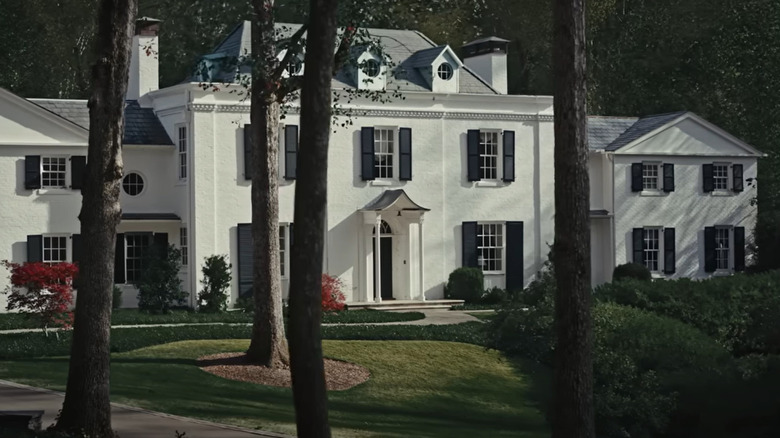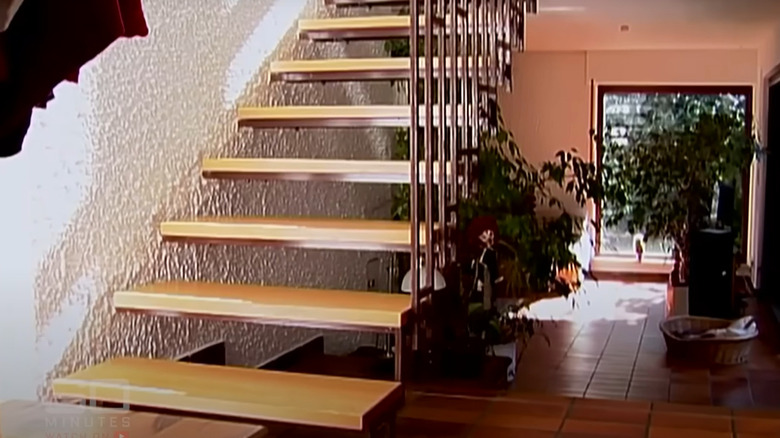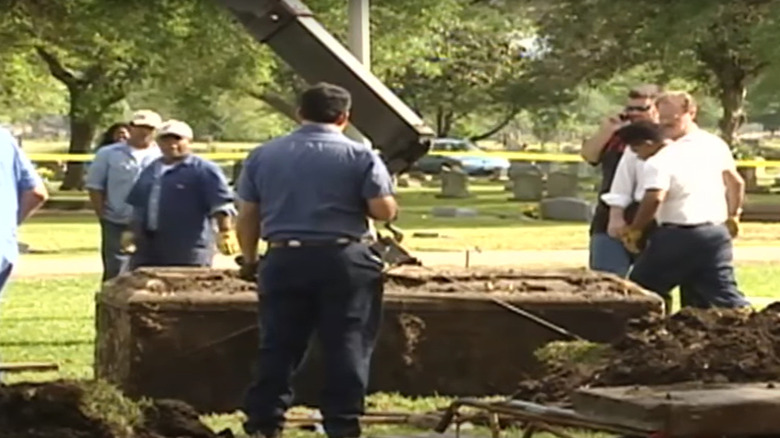Here's What Happened To The Staircase Home
Should a house be stigmatized for crimes committed in its walls? Wood, plaster, stone, and glass are only materials, and a home has no say in what its residents do. Yet houses that were the site of murders can easily garner a sinister reputation — one that proves difficult to shake.
Such has been the case for a Colonial-style mansion in Durham, North Carolina that was once owned by Michael Peterson and Kathleen Peterson. After Kathleen's death in 2001 from a purported fall down the stairs, Michael was put on trial for murder, and his yearslong battle to contest his innocence became a media magnet. The case has been the subject of a 2004 French documentary miniseries, "The Staircase," with additional episodes released ahead of a full series release on Netflix in 2008. The story was later adapted into an HBO Max true crime drama — also called "The Staircase" — in 2022.
The stairs — and the house — behind the case had a bit of history by the time it came into the Petersons' hands, according to The News & Observer. It was built in 1940, the 1990 film "The Handmaid's Tale" used it as a location, and it was once owned by "Finding Your Roots" host Henry Louis Gates Jr. The Petersons bought it two years later, and it remained with the family until Michael was convicted in 2003, at which time it went back on the market.
The house has struggled to find a long-term owner
Murder tends to be — well, murder — on the value of a house. According to Realtor, homes that were the site of notorious killings can lose between 10 and 25% of their value, and sellers face an uphill battle getting anyone to buy the house even at lower rates. For many, the discount isn't worth being kept up at night by the knowledge of what happened within the home's walls — or ghoulish visits from curious tourists and true crime aficionados.
So it has been for Michael Peterson's former residence, which has changed hands twice since his 2003 conviction. Per The News & Observer, the North Carolina home was initially listed at $1.175 million after he was sentenced. The price was reduced later that year to $975,000, but when it finally sold in 2004, it went for $640,000, almost half the original asking price. The buyer was Jason Balius, the owner of a local bakery.
Balius didn't hold onto the Peterson house for long. In 2007, after renovations, he put it up for sale and found a buyer within a year: Biond Fury, a New York-based psychic, who purchased the house for $1.3 million. The house stayed with Fury for over a decade, during which time he briefly tried raising money through GoFundMe for further renovations. In 2020, the house was back on the market. Realtor reported that a limited liability company acquired the house for $1.6 million that year.
Michael Peterson was connected to another staircase
The house where Michael and Kathleen Peterson lived at the time of her death has remained tightly bound to the case in the public sphere. Besides the staircase becoming the name of many media projects about the incident, the house was used in filming the documentary series. As of 2020, the town of Durham remains Michael Peterson's home (per The News & Observer). But the North Carolina house isn't the only home — or staircase — associated with the Peterson case.
A major component of Peterson's 2003 trial was the death of Elizabeth Ratliff, a family friend of Michael Peterson and his first wife, Patricia, when they lived in Germany in the 1980s. Per Newsweek, Michael adopted Ratliff's daughters after she and her husband died. But the manner of Ratliff's death — she was found at the bottom of her staircase on November 25, 1985, with Michael the last person to see her alive — raises suspicions among the Durham prosecution team. Though Ratliff's death had been attributed to a cerebral hemorrhage by German authorities, her body was exhumed for a fresh autopsy and later judged a homicide by Durham authorities.
The prosecution didn't accuse Michael of killing Ratliff. They did, however, suggest that her death was a potential model he used to try and stage Kathleen's death to look like an accident. Their arguments did not convince Ratliff's children, who remained committed to Michael's innocence through his conviction and later release.


